








Dear Angler,

Are you looking for a change in the New Year? We have plans to expand in 2023 and are seeking like-minded outdoor enthusiasts who share in our vision to bring our free publication to every town in America!
Do you want to work from home, be your own boss, and control your time and earnings? Then owning your own fishing magazine may be right for you! Our ideal candidate for this unique business opportunity:

• Loves the Outdoors
• Loves Meeting People
• Has Prior Business Experience or at Least Three Years of Sales Experience


• Has Good Credit & Driver’s License


• Is a Self-Starter

If you or someone you know is looking for an opportunity to own their own home-based business and earn a living in the outdoor industry, please contact us at 321.777.2773 x 1 or email info@coastalanglermagazine.com. Ask us if we have a franchise territory available near you! We have freshwater and saltwater franchise territories available throughout the US and abroad!

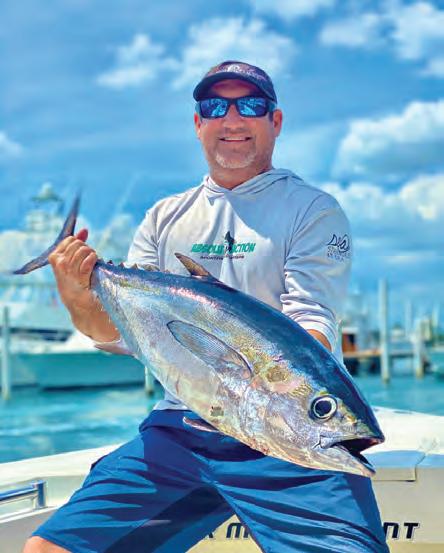 Ben Martin Editor In Chief
Ben Martin Editor In Chief
With a combined national readership of over a million per month and distribution to over 11,000 businesses in four regions, Coastal Angler Magazine and The Angler Magazine are the preferred resources for anglers and outdoor enthusiasts. Our brand is well known throughout the fishing world, and our free monthly magazines are recognized as well-designed, thoughtful publications that provide newsworthy and entertaining information pertinent to the marine and fishing industries.
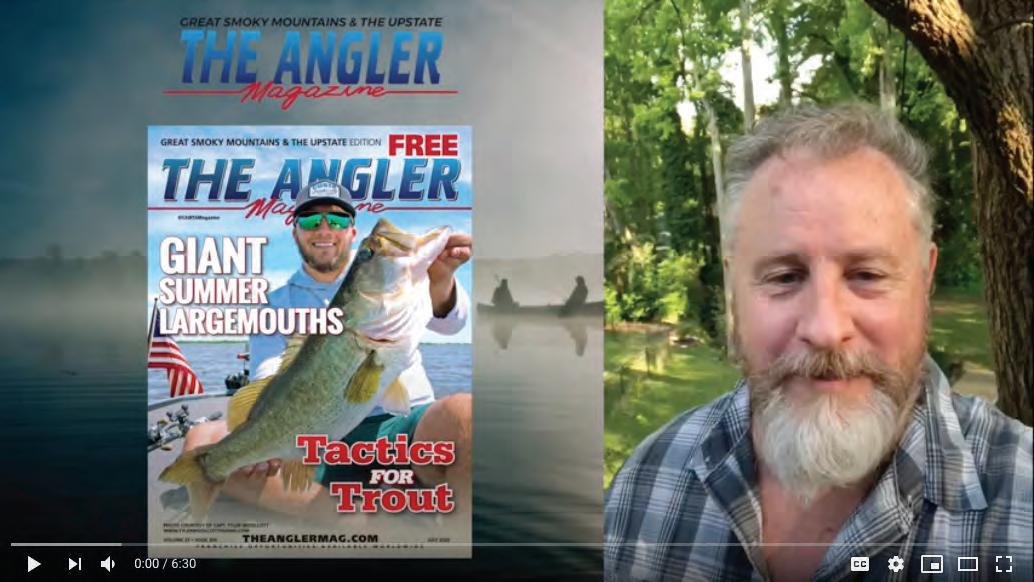
Be in Business For Yourself...But Not By Yourself. An exceptionally rewarding and fulfilling business opportunity, as a co-publisher of your area’s Coastal Angler or The Angler Magazine, you’ll enjoy the benefits of controlling your own time and future. Our proven franchise publishing system enables individuals with no prior publishing experience to publish a credible and profitable localized version of our award winning magazine. We provide complete training and on-going support to ensure your success.

The debate over which hull design is preferable (mono-hull vs. dual-hull) has been battered around for decades. Most cat-hull owners are very familiar with mono-hulls. My suspicion is that many mono-hull enthusiasts may not necessarily be familiar with the attributes of a dual-hull vessel.

Forrest Munden and Charlie Henderson are very familiar with dual-hulls. They’re the people behind Sea Cat, one of the smoothestrunning, most fuel efficient and versatile boats on the water. This boat thrives in a 3- to 5-foot chop. Sea Cat owners share the experience of often being the only boats on the water during choppy bad weather days. Dual-hull boats, and Sea Cat in particular, do not pound… ever! Remove pounding from your boating experience, and you’ll see how much more enjoyable your time on the water becomes. You’ll also be out there running comfortably when conditions are too rough for most boats.


Before you allow your position on the monohull vs. dual hull debate to be etched in stone, I strongly recommend you take a ride, preferably on a rough day, in the legendary Sea Cat. I predict you’ll be instantly convinced of its benefits.
The thing most first-time Sea Cat passengers do is to hold on to a railing and brace for a pounding that never occurs. You can see it in the tense position of their feet, legs and arms as they hold on to the rail. It’s a fairly standard mono-hull position. They are accustomed to the pounding. They’re prepared for it, anticipating it... but on the Sea Cat it never occurs. Never.
It’s actually pretty funny to see the look on a Sea Cat passenger’s face when they finally realize there’s no need to brace. That’s also when a smile spreads across their face. They’ve settled the debate.




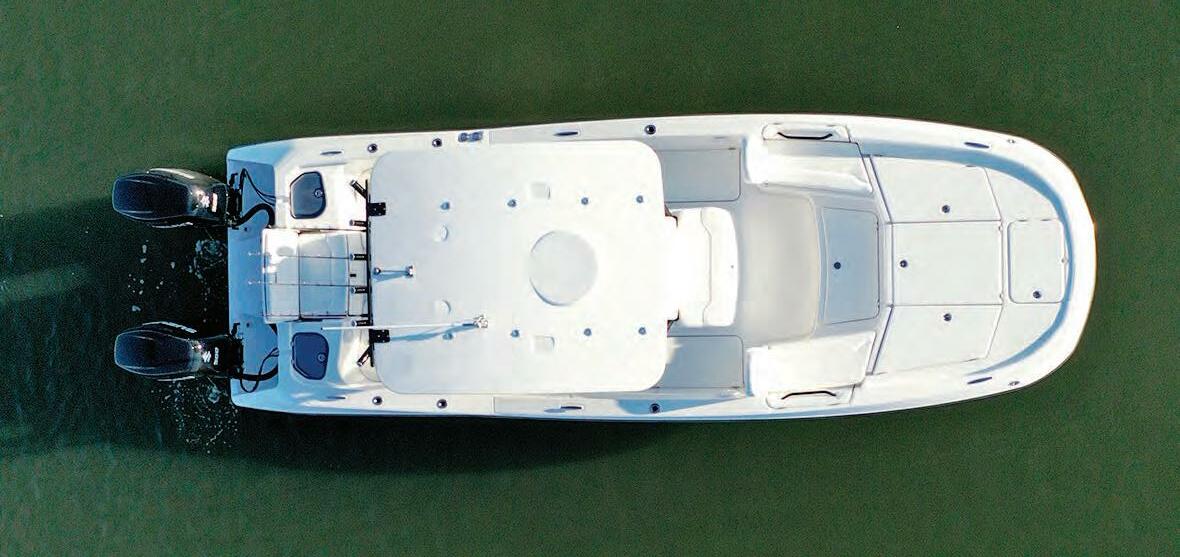




Here are a handful of catches recently approved for the International Game Fish Association’s (IGFA) world record books. For more world records, visit the IGFA website at igfa.org.
Yukihiro Sakamoto landed this 2.28-kilogram (5-pound) scrawled filefish on June 19, 2022, to set the IGFA All-Tackle World Record for the species. Yukihiro was fishing in Yakushima, Japan and using a small piece of natural bait. After a quick fight he was able to land this record fish, take a few quick snapshots, record the filefish’s weight on his certified scale and then safely release it. Scrawled filefish, also known as scribbled leatherjacket filefish, are found worldwide in tropical and subtropical waters.

On May 11, 2022, Yuuma Nishino landed a 4.80-kilogram (10-pound, 9-ounce) sankomenuke to set the IGFA All-Tackle World Record for the species. Yuuma was fishing in Manazuru, Japan where he pulled the fish from the deep water after a nearly 40-minute battle. Sankomenuke (Sebastes flammeus) are a bottom-dwelling species common to waters off Japan and are most often caught in deeper than 1,000 feet of water. Yuuma’s fish topped the previous record by nearly two pounds.

This past August, Meredith McCord fished the Lake of the Woods in Ontario, Canada, where she earned several IGFA World Records including the IGFA Women’s 8-kg (16-lb.) Line Class World Record for muskellunge. She set the record on Aug. 17, 2022, by fooling this beautiful 7.97-kilogram (17-pound, 9-ounce) fish to strike her Mepps fishing lure. She quickly landed the fish, weighed it on her IGFA certified Boga Grip and safely released it.


IGFA Representative Jan Forszpaniak was fly fishing the Hunt River in northern Alaska on Aug. 10, 2022, where he caught-and-released several impressive inconnu. While on the trip, the largest inconnu Jan caught measured a whopping 90-centimeters (almost 3 feet) on his official IGFA measuring device. The catch earned him the IGFA All-Tackle Length Fly World Record for the species.
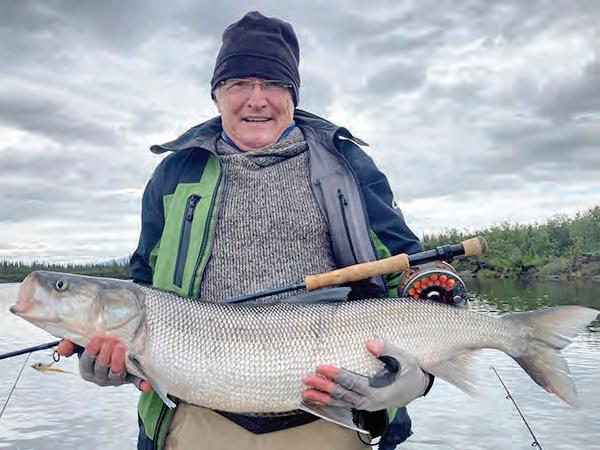
On August 12, 2022, Antonio Molinari landed a massive 139-centimeter (more than 4.5foot) redtail catfish (pirarara) to set the IGFA All-Tackle Length World Record for the species. Antonio was fishing on the Xingu River in Brazil when the catfish ate live bait. Antonio quickly recorded the catfish’s official length on his official IGFA measuring device before releasing it.



Now that Jack Frost has bay temperatures thoroughly chilled, only diehard lure chuckers will be found stalking the flats. Most of us have one thing in mind this time of year, catching a trophy trout. Here is how I approach my quest for that dirty 30-incher.
When water temperature stabilizes in the COLD range, all the migratory forage flees for warmer pastures. The bays are left with larger mullet as the primary food source for prized speckled trout. This is the time of year that I pull out my larger lures. This could be a longer length, a wider profile, or both. This doesn’t have to be a 12-inch lure that is no fun to cast all day, but I do upsize from my typical 3- and 4-inch lures that I use most of the year. We have all seen a 25-inch trout with a 15-inch mullet in

its belly, so they will eat something huge, but giant baits aren’t as fun to fish.
My confidence lures this time of the year are typically a 4-inch wide-profile slow-sinking lure or a 5-inch bulky body paddletail. Since plastisol is buoyant, the bulky lure will have a slower sink rate, which I prefer under most conditions. The slower sink allows for dual benefits this time of year. Logically, the slower sink rate matches the slower mood of a cold fish. Also, I spend a lot of time targeting fish over shallow grass in knee-deep water. A slower sink rate keeps my lure in the strike zone longer before it disappears into the grass.
I fit my 5-inch rattling paddletail with a weedless hook. Depending on the conditions, I might go weightless or with a 1/16- or 1/8-ounce jighead. The weedless version keeps me out of the grass, it lessens the opportunity for my cold, less-dexterous hands to be impaled by a hook, and most of all, it does less damage
to the trophy fish that I am targeting.

Areas I target will be near deeper water, have softer bottom, have visible forage, structure and hopefully be lower-traffic areas. While planning trips, I take into consideration moon phase, current conditions and recent conditions when determining where to fish.
I have never caught a trophy trout by accident. I don’t know if that is lucky or unlucky, but every trout I have landed over 27 inches was on a day when I set out specifically targeting larger fish. Case in point, if you want to catch trophy trout consistently, you must make the effort to target them, fish where they live and be attentive to details. I know numerous anglers have caught large trout with no effort, but most don’t catch two.
Capt. Michael Okruhlik is the inventor of Knockin Tail Lures®, and the owner of www.MyCoastOutdoors.com.
8:17 p.m. Been out on the lake for hours.


the official battery of “One More Cast...”
It’s 8:17 p.m. Been out on the lake for hours. But there are more fish in the water. And my LBP batteries are still going strong. Maybe One More Cast . . . the official battery of “One More Cast...”

Visit lithiumbatterypower.com call us at 727-233-9831

Visit lithiumbatterypower.com Or call us at 727-233-9831



Suzuki Marine, USA LLC has launched two new additions to its powerful line-up of outboard motors — the new-for-2023 DF350AMD and DF300BMD V6 4-strokes. Suzuki Marine USA unveiled these new models today before the boating industry, press and boating public during the 2022 Fort Lauderdale International Boat Show.
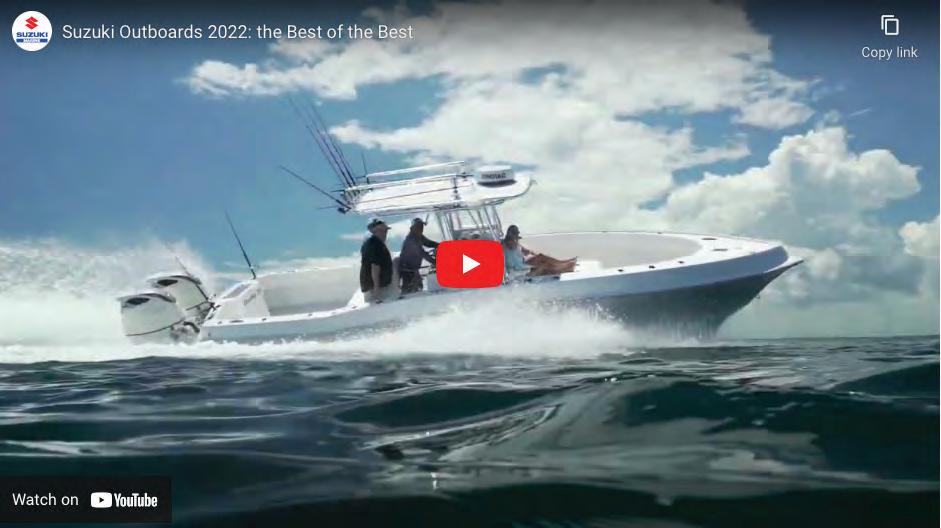
“We’ve made these flagships of our fleet even better by adding some innovative new features that improve performance, durability and ease of rigging on a wide variety of boats,” said George “Gus” Blakely, Suzuki Marine Executive Vice President Sales & Service. “We listened to our boat building partners, our dealers and our customers and used their input to make our best motors even better. This has always been the Suzuki way,” added Blakely.
These 350 and 300 horsepower models with contra-rotating twin propellers are the first Suzuki outboards to offer the benefits of advanced integrated steering. Integrated steering allows for more streamlined rigging of these V6 outboards on a range of inshore, offshore and freshwater boats, while also providing a cleaner appearance in the motor well. Because integrated steering eliminates concerns about interference and clearance issues created by external steering cylinders, boat builders can more easily rig these popular outboards on a variety of hull types in single or multiple engine configurations.
Integrated steering also reduces the possibility of the steering cylinder hitting the motor well if the outboard is tilted too far forward.
Suzuki has also engineered a new lower gear case for the DF350AMD and DF300BMD (also available on all five series 350A/300B models), designed to enhance durability, increase top-speed performance, improve fuel efficiency and make maintenance and service easier. The new design delivers superior gear lubrication and maintains the gear oil at a lower temperature, increasing durability and reliability over the long run — even in the toughest operating conditions.
The external surface area of this new gear case has also been reduced and reshaped, allowing the lower unit to slice through the water with less resistance. By doing this, Suzuki is able to deliver a marked improvement in both fuel efficiency and top-end performance for today’s boats. This streamlined gear case has the added benefit of reducing the amount of gear oil required from 3.2L to 2.8L. This new gear case also features a new oil passage that allows users to easily change the gear oil with Suzuki’s gear oil changer without having to lift the boat. This improvement will
make it easier for boaters to stay on top of scheduled maintenance and keep their new Suzuki’s running strong season after season.
These new flagship models offer all the advanced technology and performance boaters expect from Suzuki’s popular DF350A and DF300B models (which will still be available in their original configuration). In addition to the proven performance and efficiency benefits of Suzuki’s dual-prop system, these motors boast a long list of features including a unique dual-louver air intake system, dual fuel injectors, variable valve timing, a self-adjusting timing chain, offset driveshaft design, Suzuki Lean Burn Technology, and more.
To learn more about the new DF350AMD and DF300BMD V6 4-strokes, or Suzuki Marine’s industry leading line-up of outboard motors from 2.5 to 350 horsepower, contact Suzuki Marine USA headquarters at (813) 687-7200 or visit www.suzukimarine.com.


Winter is the best time to fish,” said Capt. Chris Cameron, “the only problem is the weather.” Capt. Cameron is owner/operator of Fired Up Fishing Charters out of Cocoa Beach, Fla. He said it was tough to find good weather windows this November and early December, but that offshore fishing is primed to fire off like a Space Coast rocket whenever conditions stabilize.
Winter on Florida’s Atlantic Coast can be spectacular because of all the migratory species that push down to overwinter in milder temperatures. Kingfish, cobia, blackfin tuna, sailfish and others are all hunting the reefs about 18 miles off Port Canaveral. The key to the fishery is menhaden.
“This time of year, you get these huge baitballs,” said Capt. Cameron, “and there
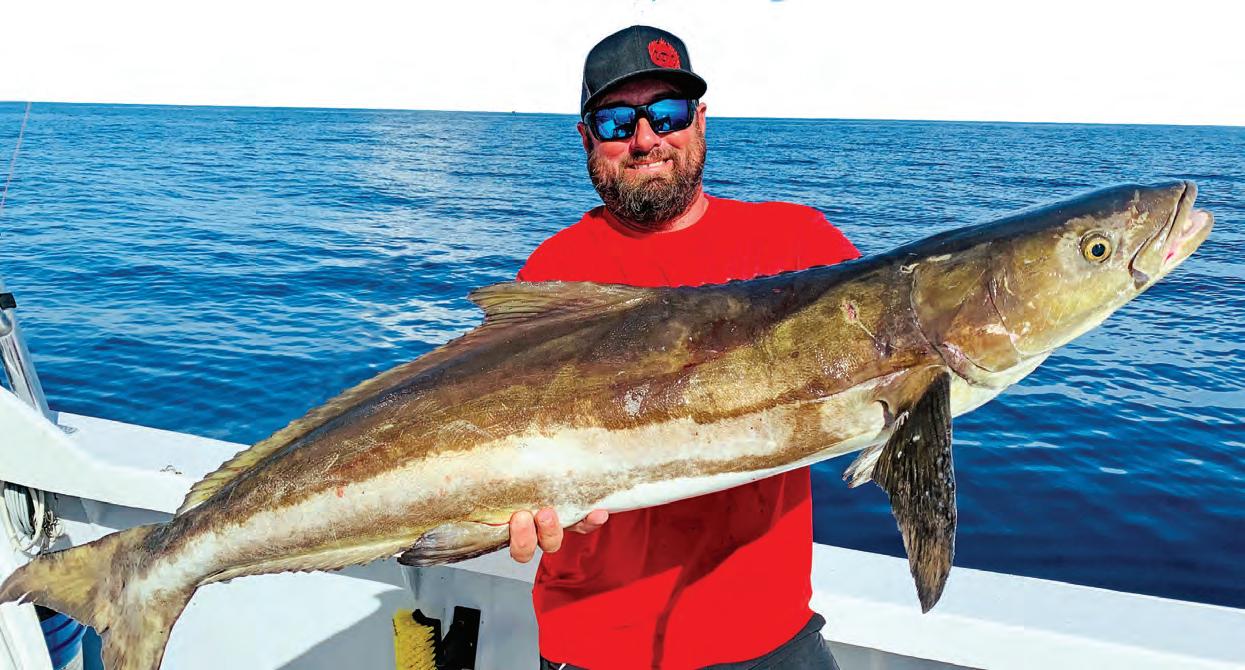
Cameron is a transplant from Long Island, New York, and even after more than two decades living and fishing Florida’s east coast, he still refers to menhaden as “bunka,” which is Yankee dialect for bunker, which is what they call pogies up where boats are winterized this time of year.

“On good days, when you can get offshore and the water is clean, we might catch a limit of kings, a couple cobia, a couple blackfins and hopefully a sailfish,” Cameron said. Even with 2022’s tightening of cobia regs, that’s a fun and delicious

mixed bag to fill the freezer.
At places like Pelican Reef and 8A Reef, where depths range from 75 to 85 feet, Cameron finds the bait and then goes to work slow trolling live baits on doublehook stinger rigs and 20-pound line and tackle. He said he pulls baits at about 1 knot, which allows them to swim along naturally.
“The thing with slow trolling is you never know what you’re going to get,” said Cameron. “It could be a big king, a sailfish, a cobia or a shark.”

Pitch rods are kept ready in case a cobia shows up on the surface. Cameron said he’s learned from experience not to over-stimulate cruising cobia by throwing multiple lines at once. Usually, clients can convince cobia to bite with a one-two punch. They keep a squid-tipped bucktail ready for a quick cast. If that doesn’t draw a strike, it allows time to slap a live bait on the second rig, which is a simple 5/0 circle hook.
Shrimp boats are another option Cameron seeks out this time of year.
Although chasing them can be a bit of a time gamble, since they are usually 25 miles offshore over 200 feet of water, they can be extremely productive.


“If you see a shrimp boat off in the distance or spot one on the radar, it’s almost always worth a shot,” Cameron said. “When they dump their bycatch in the morning, it pulls everything up.”
Fishing shrimp boats can be short-lived, but it can also provide fast action for the same species that come off the reef. For this bite, Cameron beefs up to 6500 spinning gear and 50-pound braid and 50-pound mono leaders. He keeps four pitch rods ready, two with bucktails and two with live baits, because the bite

 Contact Capt. Chris Cameron and Fired Up Fishing Charters through their website at firedupcharters.com.
Contact Capt. Chris Cameron and Fired Up Fishing Charters through their website at firedupcharters.com.







Now that the cold has set in and will be here for a bit, we once again change focus on what we are catching.
Most larger fish tend to slow down during winter months since it takes more energy out of them; however, this is not the case for sailfish. As long as you are brave enough to venture into the rough winter seas, you’ll be sure to get on the bite.

Sailfish are the sleek and slender
member of the billfish family. Their name comes from the extremely large dorsal fin that extends over almost their entire back. They also have long pelvic fins, which stretch almost to their anal fin. These long skinny fish are built for speed and can reach max speeds of about 70 mph.
Atlantic sailfish participate in seasonal migrations along the coast of America. Some fish will stay where they are, but most
move northward in spring and south during the winter. This is due to the bait schools following the cold cycles. As soon as it gets hotter up north, they migrate. Once winter sets in, they return to Florida. Sailfish spend most of their time in warm surface waters of the epipelagic zone of the ocean. They make frequent nearshore forays and congregate where water temperatures are in the 70 to 80 degree range.
They begin spawning in spring, and this can occur as early as May or all the way into the fall. Like many other pelagic fish, sailfish use a process called external fertilization, or broadcast spawning. Males release sperm and females release eggs into the water current. Each female can produce about 4.5 million eggs. Once the sailfish hatch at around an eighth of an inch, they grow rapidly to about

slow bump-trolling edges. Live threadfin herring, Spanish sardines and pilchards are my favorites while drifting on a color change.
“Depths can vary, so don’t use yesterdays information because conditions constantly change. Sometimes when the bite is slow, I like to bottom fish and fly a kite downwind. That way you stay busy with the bottom action and when you
6 pounds within a month. Their growth slows once they reach about 4 feet in length.
Capt. Charlie Stuve put me on my first sailfish. He runs Native Guide Fishing Charters out of Jupiter, Fla., and sailfish are a favorite winter target for his clients.
“I suggest live baiting,” said Capt. Charlie. “Goggle eyes are the most popular bait, but other baits work, as well. Kite fishing is preferable with goggle eyes, but I also do well
least expect it you have a sailfish on your kite.”
The IGFA world record for Atlantic sailfish weighed 142 pounds, 6 ounces and was caught in Lobito Angola in 2014.

Emily Rose Hanzlik holds 56 IGFA world records in various categories.
She hails from West Palm Beach, where she has a part time Bowfin Guide Service as well as fishing classes for Jr. Anglers. Find her on Social Media @emilyhanzlikoutdoors.
"As long as you are brave enough to venture into the rough winter seas, you’ll be sure to get on the bite."












During the winter, many fly anglers put away their fly rods. They pursue coldweather activities like hunting, skiing and snowboarding. This seems like the most logical thing to do during the cold winter months; however, fly angers often overlook some wonderful fly fishing opportunities close to home.
Sharks are a great fly rod winter species that can be caught on both the East Coast and West Coast. If sight fishing in shallow clear water is your game, then the Florida Keys are the place to be. On any given day the adventurous fly anger can venture onto the flats, set up a chum slick and target bull, lemon, blacktip and tiger sharks. Key West is one of my favorite Florida sharking spots, and November through February can be prime time. An added bonus to the great Keys shark fishing is the chance to target false albacore just a few miles off the coast of Key West. The false albacore is a great fly rod challenge and could be one of hardest fighting species in the tuna family!
Southern California is another great
winter saltwater fly fishing destination for sharks. Blue sharks migrating from the southern waters of Mexico take up residence just a few miles off the San Diego coast during the months of December through February. A short boat ride and


My No. 1 winter fly fishing destination is Louisiana. The marshlands south of the New Orleans coast have some of the best red drum fishing anywhere in the states. Redfish in the 30-pound class are common, and the sheer number of fish a fly angler can catch in a day’s fishing can be staggering. Because of the shallow water and large fish, this area is a sight fisherman’s dream.


There may be no better winter fly
some chum are all you need to catch blue sharks up to 300 pounds.
As with the Keys, West Coast sharking is all sight fishing. Large poppers and steamers in orange and red are the best fly options for hooking these very large predators. Once hooked, the blue shark will run an angler 200 yards into the backing within a few seconds. The ensuing fight is strong, powerful and can be exhausting; however, the payoff is hooking and landing a giant fish on fly gear!
fishing experience than poling around the marshlands off New Orleans in a flats skiff, sight fishing to monster redfish. To top a great day of winter redfishing, there is nothing like heading back into New Orleans for a drink at Vaughn’s Lounge, one of the city’s best watering holes!
For more information or to contact Conway Bowman, visit www.conwaybowman.com.


Winter is one of my favorite times of year to target trophy bass on the new Headwaters Lake that opened to the public in August of 2020. Headwaters has been producing so many trophy bass since it opened. I feel privileged to guide clients there. We have broken many personal bests, and I get goosebumps every morning I launch the boat because I know the quality of fish.
Headwaters Lake is a 10,000-acre manmade lake in Indian River County adjacent to the well-known Stick Marsh and Farm 13. Prior to flooding the land, the FWC and the St. Johns River
Management District created habitat with numerous underwater structures, flooded timber, vegetation and 30-foot-deep pits. There were already existing ponds and pits on the property that contained resident bass, and nearly a million Florida strain bass were stocked along with bluegill, redear sunfish and crappie. There are thousands of acres of submerged vegetation, mostly hydrilla, along with acres of cattails, spatterdock pads and hyacinth mats that are super fun to fish.
In central Florida, January and February are primetime, when bass are in full prespawn mode and waves of females move up to the flats to spawn. Air and water temperatures drop considerably

after cold fronts. Severe cold fronts affect the fickle Florida strain bass, but not for long. Usually two days post front, conditions warm up and fish eat well again. These weather changes transition bass and baitfish from summer patterns into fall and winter staging areas. They feed heavily on shad and other forage and stage near the spawning flats. When full moons and 60-degree water temps coincide, bass move onto the flats. They spawn in waves. Spawning fish select isolated hydrilla clumps, reeds and the bases of pad stems to fan out beds. Hard sand bottom is key. Use sonar to locate hard
bottom or stick your rod tip into the water to feel the bottom. If your rod tip pushes into mud, keep moving until you find sand and then search for isolated cover.
My other primary focus is staging areas. Staging fish eat well and are plump as they congregate to wait for prime conditions to move up and spawn. New fish constantly come and go using the same areas, so they are extremely productive this time of year.
Ditches and canals on Headwaters are highways that bass and baitfish utilize to stage. The intersections and mouths of these canals are high percentage areas to


locate schools of fish. Find a canal with nearby flats as well as pits or deeper water for bass to retreat to, and you will find fish. They stage on tapering drop offs, mouths of intersections, deep ditches and on mainlake points to ambush bait. I target staging fish with 6- to 8-inch paddletails, glidebaits, Rat-L-Traps, jerkbaits, chatterbaits, prop baits, Whopper Ploppers, spinnerbaits, stick worms and speed worms.
Contact Capt. Ricky Congero through his website at www.blackcloudfishing.com or call him at (407) 693-6153.









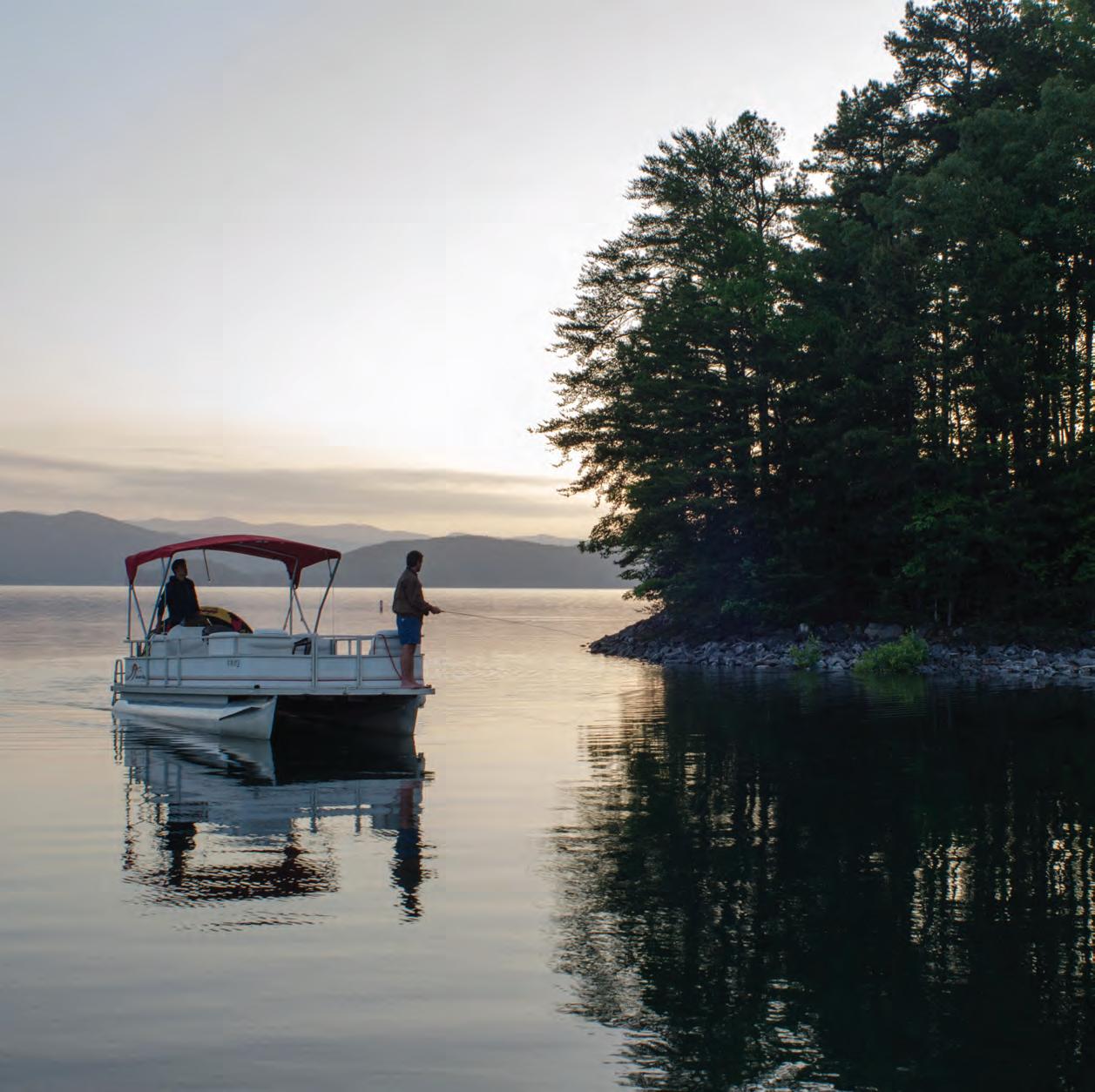
Every season is the best season to explore the many treasures in the Upcountry.




ou don’t need an invitation to have fun in Upcountry South Carolina: Come kayak crys-tal blue lakes, hike to rushing waterfalls, dig into local cuisine, attend family oriented events and breathe fresh mountain air. But when you hold a South Carolina fishing license, it feels like an official ticket to enjoy the great outdoors.
Fish bite year-round in the lakes, rivers and streams of Upcountry South Carolina, which is located in the state’s northwest corner in the foothills of the Blue Ridge Mountains. Devils Fork State Park in Salem is a great place to access Lake Jocassee, which holds state records for rainbow trout, brown trout, redeye bass, smallmouth bass, spotted bass and yellow perch. Or try your luck at Lake Hartwell, at Lake Hartwell State Park in Fair Play and Sadlers Creek State Park in Anderson, three-time host of the Bassmaster Classic.
The Chattooga River boasts healthy wild trout populations and is also regularly stocked by Oconee County’s Walhalla State Fish Hatchery. The Whitewater River above Lower White-water Falls is another great option for wild trout. Lake Keowee, at Keowee-Toxaway State Park in Pickens County, swims with largemouth, smallmouth and spotted bass, crappie, bluegill, yel-low perch, catfish, brown and rainbow trout.
Pick up everything you need—including advice— at local fly shops or book a guided fish-ing trip. Sam Jones, of Jocassee Charters, puts anglers on trophy trout. Buster Green’s Guide Ser-vice reels in stripers, hybrids and bass on Hartwell and Keowee. Chattooga
River Fly Shop leads fly fishing trips on the Chattooga and Chauga rivers.




Even if you don’t fish, you can still get on the water. Jocassee Lake Tours offers tours of the lake and of Jocassee Gorges, which National Geographic called a “destination of a Lifetime.” Some amazing spots can only be reached by boat. Several tours are offered, so you can learn from a naturalist while riding on a pontoon or paddle a kayak through coves and under waterfalls.
Prefer to captain your own boat? There are several rental companies, including TriCounty Boat Rental, on Keowee, Jocassee, Hartwell and other lakes.



If you’d rather be under the water, Jocassee is a world-renowned freshwater diving desti-nation that boasts visibility of more than 50 feet at depth. Lake Jocassee Dive Shop offers lessons and guided trips to see “The Wall,” where a section of mountain was blasted to build the dam, or a 40-foot swimthrough wooden sailboat.
From fishing to boating, hiking to camping, biking to bird watching and more, the Up-country’s state parks are a great place to play. Dip into the swimming hole at Oconee State Park. Hike to the tops of Pinnacle and Table Rock mountains at Table Rock State Park. Explore the 13,000-acre Mountain Bridge Wilderness Area at Caesars Head State Park. Or create your own adventure at any of the Upcountry’s 13 state parks.
Visit UpcountrySC.com to learn more.
The best groceries come from different places on the bottom and from different depths.
Farther north up the Atlantic coast there are a lot of beeliners (vermilion snapper) taking the place of yellowtails. In this mix will be triggerfish, which I absolutely love! Beeliners and triggerfish have one thing in common: the largest ones of the school stay higher in the water column. This is why I
like to fish a level-wind reel versus a spinning reel with small circle hooks for this style of snapper fishing. I start dropping one “strip” of the reel at a time until I get down to the fish. A “strip” is the distance of raising the rod up with your thumb off the spool, and putting your thumb back on the spool. Simply let your thumb off the spool and let it fall in 10-foot “strips” while raising the rod tip upwards. Count the strips it takes to get down to the bites. Four strips will be approximately 40 feet deep. Note where you feel the first bite. This will usually be the largest triggers and beeliners in the school. If you stop getting bites or you’re only catching
With grouper season over, it’s time to switch gears and concentrate on other species. This is the time of year to size down and go for the snappers. Depending on water temps, it’s also a good idea to keep a light line out for any pelagics that swim by.

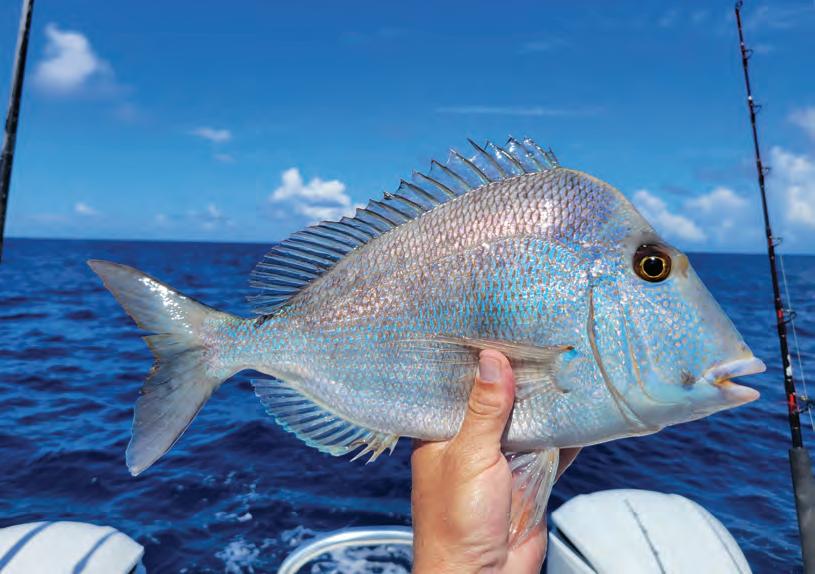
I love yellowtail and a mangrove snappers, but I really like jolt heads, triggerfish, pinkies, black seabass and hog snapper. I treat bottom fishing like I’m going (organic) grocery shopping. First and foremost, I don’t shop on every aisle of the grocery store. I go down the aisles that contain the items I really want.
smaller fish, let this same tackle go deeper or all the way to the bottom. This is where you’ll catch the jolt heads, black sea bass, mangroves and hogs.

I use a two-hook “chicken rig” made of 50-pound fluoro with small circle hooks and a 3-ounce bank sinker. I bait it with small pieces of squid. A small 2- or 3-ounce jig works with the same tackle as the weight instead of a bank sinker. This is especially effective on large triggers. Just replace the treble hooks or single J hooks on the back of the jig with small circle hooks and tip with a small piece of squid.

I could go on and on about this style of fishing. The limits are pretty good and the reward comes at the table. It is a good time of year to take youngsters out, because this style of fishing produces lots of action, and it’s not heavy-duty grouper fishing. Little ones love a trip to the “organic grocery store.”
See more from Tim Barefoot at www.barefootcatsandtackle.com.











Situated riverfront and surrounded by the natural springs of King’s Bay, Plantation on Crystal River is an ideal setting for travelers of all ages and interests to enjoy endless outdoor activities. From boating and fishing to scalloping and wildlife encounters, visitors from around the globe travel to Florida’s Nature Coast to enjoy the organic assets of this dynamic destination. And before or after these unique activities, guests can enjoy the full-service restaurant, lobby bar and tiki bar conveniently located on property. For international travelers, transportation is convenient with nearby international airports, including Tampa International Airport only 70 miles away, and Orlando International airport just 90 miles away. To follow is just a sampling of the abundance of available outdoor pursuits.

Monday: Sangria Monday – Enjoy our featured sangria of the month for just $7.
January's Flavor: Blackberry Rosemary
Tuesday: Tequila Tuesday - $8 for our featured tequila of the month (no substitutions).
January's Tequila: Salt Chocolate Tequila
Wednesday: Wine Wednesday - $10 off any bottle of wine with dinner purchase
Thursday: Thirsty Thursday – Take $2 off any of Plantation’s Signature Cocktails or Glasses of Wine. Featuring the soulful Louie Fortunato live entertainment.





n the Gulf of Mexico, red snapper are a highly prized species by anglers. The open season for these tasty bottom feeders is a hodgepodge of dates across the five Gulf states, which each manage the species independently, but generally summer is the prime season when they are pursued.
This time of year, what some anglers miss out on is the slew of other tasty snappers, groupers and other reef fish that are open and available for harvest. Just because you can’t keep a red snapper doesn’t mean you shouldn’t
go fishing. Also, just because a snapper is red doesn’t necessarily mean it’s a red snapper.
The Gulf of Mexico Fishery Management Council put together the following list of snapper species that anglers might mistake for red snapper. All of these species fall within the federal aggregate bag limit of 10 total snapper combined, and harvest remains open in federal waters until scientists determine the annual catch limit has been met. Check the regs where you fish and go collect some meat. The following might keep
you from robbing yourself of an extra fish you might misidentify as a red snapper.






There are at least four other species of snapper in the Gulf that could be mistaken for red snapper. Two of the other red colored snapper species, vermilion and queen snapper, are pretty easy for the average angler to recognize, while two of them, blackfin and silk, are commonly mistaken for red snapper.
For more information, visit gulfcouncil.org.





Vermilion Snapper : Rhomboplites aurorubens
Vermilions or beeliners share the red eye color of a red snapper, but they’re usually much smaller and the bottom fin closest to the tail (anal fin) is not sharply pointed like that of a red snapper.





Blackfin Snapper : Lutjanus buccanella
Blackfin snapper can look very similar to a red snapper, and often inhabit the same depths and structure. The most obvious difference is a black half-moon shaped marking at the base of the pectoral fin. The eye of the blackfin is often more orange or copper than a red snapper, and the blackfin snapper’s bottom fin closest to the tail (anal fin) is rounded, rather than pointy.
Silk Snapper : Lutjanus vivanus
Silks can look very similar to a red snapper. This is especially true when its unique yellow coloration isn’t obvious. Silk snapper are set apart from red snapper because they have yellow eyes and black trim on the edge of their tail. Overall their body shape and size closely resembles that of a red snapper, so keep an eye out for those subtle differences.
Queens are pretty easy to distinguish from red snapper. They’re typically found much deeper, and they have a deeply forked, fancy tail that is not found on red snapper. Additionally, their eyes are relatively large and their bodies are longer and more slender than red snappers.


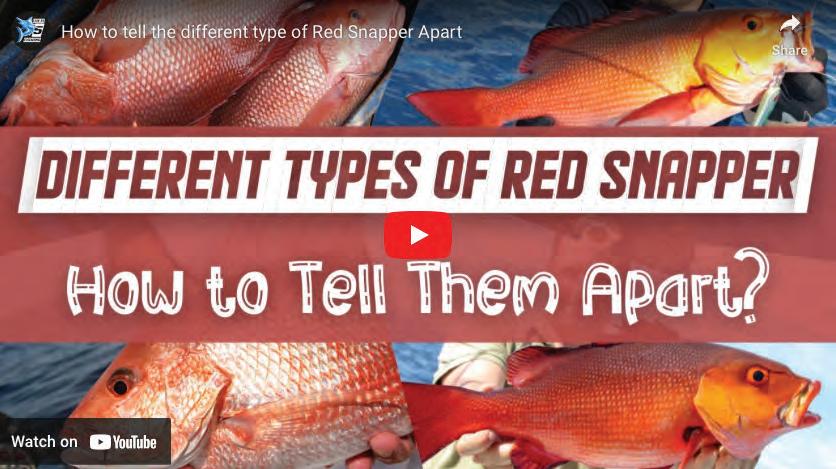 Red Snapper Lutjanus campechanus
Red Snapper Lutjanus campechanus


Berkeley County is a wonderland for outdoor enthusiasts, sports buffs, adventure seekers, and water lovers. From exemplary fishing for striped bass, or a trophy largemouth bass, to our hiking trails and water activities, along with scenic outdoors where you can catch a glimpse of white tail deer and gators, Berkeley County has activities to fit all visitors and families.



The waters of Berkeley County, SC, have been a wellspring of natural beauty, culture, and adventure for millennia; people have been coursing the intricate and beautiful waterways of South Carolina’s Lowcountry, with its tall cypresses, sunken forests, and abundant wildlife, for thousands of years.
Twenty-five distinct paddling trails over 235 miles of waterways make up the Berkeley County Blueway system, a hidden world of stunning natural splendor. Packed into this area—the largest paddling trail system in the Southeast—are kayaking and paddling opportunities for all different skill and difficulty levels.
Berkely County lakes make up one of South Carolina’s largest and most beloved freshwater resources. Fishing here is among the best in the state, across the flats of Lake Marion to the open waters of Lake Moultrie. Abundant catfish, bass, and crappie await.
Awaken your sense of adventure in these pristine waters. The Lowcountry is waiting for you at ExploreBerkeleyCounty.com.


Whether you are trolling offshore or cut-baiting for catfish, the freshest baitfish possible increases the odds for success. Netting live bait is not always an option. Or maybe you’ve got a livewell full of baitfish at the end of a trip? It’s a shame to throw out good bait. Here’s a time-tested recipe for preserving bait so it comes out of the freezer as fresh as possible.
The most important step to quality frozen baits is to freeze them fresh and to bring their temperature down as quickly as possible. The key is to be prepared. Have a cooler,


several bags of ice and some sea salt ready. Alternate layers of fish and ice in the cooler, and sprinkle the ice with salt. This will bring the temperature down more quickly than ice alone. The bait will stay fresh on the ride home, and it will also be on its way to freezing by the time you get there.
If you’ve got a vacuum sealer, use it, sealing the chilled bait in small batches and single layers. Do the same if you’re using
freezer bags, and try to squeeze or suck all the air out. If you can, avoid stacking baitfish bags in the freezer. Space them out as best you can, and they will freeze more quickly. They can be stacked once they are frozen.
When it comes to thawing bait, those small batches will come in handy. Thawing only what you need at the time will keep the rest fresh for when they are needed. Saltwater anglers should thaw baits in a bucket of iced seawater. Freshwater anglers can do the same with water from the lake or river they are fishing.





 By CAM Staff
By CAM Staff

Winter’s cold fronts consolidate wahoo to their preferred temperature ranges across their range. This makes them easier to target than at any other time of year. The following is a short list of very good destinations for wintertime wahoo.
San Salvador, Bahamas:

Way out in the Atlantic in the southern Bahamas, the waters off San Salvador hold one of the best wahoo fisheries in the world. Peak wahoo season is December through April, when hordes of ’hoos migrate to the area’s warm waters. The island might just be the best place on the planet for a shot at a triple-digit wahoo, and the right conditions can yield fast action for 50-pounders, as well.
Within a short 10-mile run off the island, a seamount rises to 180 feet from 4,000 feet of water. This hump is a well-known feature, where wahoo congregate to feed on schools of small tuna. The remoteness of San Salvador keeps fishing pressure in check, but it also makes this one of those bucket-list trips you plan ahead for.
Offshore humps out of Galveston, Texas also lay claim to some of the best wahoo fishing in the world, and every winter anglers connect


with giants. This fishery, however, is reserved for anglers with the gumption to make 100-mile overnight runs to features like East and West Flower Gardens to catch the morning bite.
Windows of good weather and big, fast boats are a requirement to reach the fishing grounds at the edge of the Continental shelf, where wahoo pile up with baitfish on steep depth changes of rock structure.
Off the South Carolina coast, cooling water temperatures confine wahoo to the warm water at the edge of the Gulf Stream.
This makes them much easier to target than when they are spread out in summer.
Depth changes and structure at the edge of the Continental Shelf, combined with warm 70 to 80 degree waters of the Gulf Stream can be found 50 or 60 miles off the coast. These structures hold baitfish in the temperature range where wahoo are comfortable. Covering lots of water with high-speed spreads trolls up the best wahoo of the year, every year.
It seems everything offshore of Louisiana is about the oil rigs, and in wintertime the oil rigs are all about wahoo. The key to finding wahoo on the rigs is finding the right temperature range, and the magic number is 60 degrees. Wahoo congregate and feed around the rigs where there is bait and water temperatures of at least 60 degrees.
One of the great things about Venice is there are deep-water rigs relatively close to shore at just 15 or 20 miles, which means it’s possible to find a good weather window and go. The Louisiana coast also boasts some of the best catch rates for wahoo in the world, and 50- to 60-pound fish are the norm.

Dometic has redefined the ease of use and practicality of a basic trim tab system. Featuring an intuitive dial controller, you can easily adjust the pitch and roll to get your boat on plane quickly and efficiently. A programmable favorites button makes for effortless operation. While its innovative, rugged design and autoretract feature, ensure reliability and safety on the water, whatever the conditions.


Aboat that isn’t trimmed properly can pound through the waves for an uncomfortable, wet ride and even suck up considerably more fuel than it should. It can even be unsafe in challenging weather conditions.
Properly adjusting a boat’s trim tabs has an amazing positive affect on how a boat drives and feels, and can make a significant improvement in speed and fuel economy. The challenge has always been the “trial and error” aspect of trim tab operation. Adjusting port and starboard tabs individually with traditional toggle switches is not very intuitive–especially when you are faced with constantly changing dynamics throughout the day, as wind and waves change and people move and shift around the boat, altering the balance of weight.
Dometic Marine’s new SeaStar standard trim tabs are designed to make trim tab adjustment second nature to operators of all types of boats. The heart of this trim tab system is an intuitive dial controller that lets boaters easily “dial-in” the optimum ride for any situation. All the boater needs to do is turn the dial in the direction he wants to level the boat, and the electric actuators respond quickly and precisely to level the ride. Easy-to-see LED lights on the controller indicate port and starboard tab positions, with an ambient light sensor that automatically adjusts brightness for optimum visibility in any environment.

There are also single press Bow Up and Bow Down inputs for manual adjustment. This allows the boater to adjust the attitude of the boat without affecting roll, and vice versa, for precision ride tuning. This intelligent
The all-electric trim tab actuators utilize a planetary gearbox, high-torque DC motor and freewheeling ball screw mechanism for instant response and quiet operation. A rugged housing and simple two-piece design minimize water intrusion points and features dual housing seals, a rear seal in a protected bushing area, and a wiper that removes particles from the shaft and protects the rear seal. The result is a trim tab system built for the long run in the harsh marine environment.
The system is designed for use with heavyduty SeaStar stainless steel trim tabs, yet it can also be integrated with a boat’s existing tabs.


Winter fishing can be tough. In colder water, most fish slow down to conserve energy. Their patterns change; their preferred forage changes; everything slows to a crawl.
For anglers, especially inshore and freshwater fishermen, it’s time to slow down as well. Wintertime means adjusting presentation to entice fish that don’t want to chase food. Fishing slowly can be boring, and many anglers will just wait it out for a warming trend that can cause a spike in activity.
But no matter the air temperature, there are opportunities, likely on your home water, to find fish feeding actively—sometimes reminiscent of spring and summer patterns. These opportunities are created by man’s insatiable need for electricity, and they may cause you to think differently about the ugly power
plant that looms over your favorite fishery. Warm-water discharges are a beacon for anglers seeking reprieve from cabin fever. Crystal River and Tampa Bay, Fla.; Galveston and Trinity Bay, Texas; Lake Sinclair, Ga.; Lake Norman, N.C.; Michigan and Erie in the Great Lakes; the list could go on and on. Pretty much anywhere there is a power plant on an otherwise good fishery, the effects of warm-water discharge can create wintertime opportunities.
Power plants operate using huge quantities of water, as steam to drive turbines as well as for cooling purposes. That heated water, although it goes through a cooling process, is returned to the water body significantly warmer than the surroundings—sometimes upwards of 40 degrees warmer in the winter.

Like campers warming their hands around a fire, fish congregate in the heat—not just because the water feels good but because it creates an ecosystem separate from that of the main body of water. The lifecycles of microscopic organisms are accelerated. Small fish show up to feed on the little stuff. Predatory fish show up to feed on the baitfish.
Now, just because there’s a warm-water discharge doesn’t mean fish will be blowing up bait all over the place. Use the same indicators you always use to find fish. Sometimes you might be lucky enough to find bait flipping on the surface, but more often then not, birds are a very good indicator of the presence of bait and fish around a warm-water discharge.
If the fish are there, fish it the same way you would normal tidal or riverine currents. Some fish may feed directly in the flow of warmer water, but ambush feeders will be hanging on the edges and eddies. Lady fish may be found actively crashing bait in the main current, but seatrout and reds will hang back, often congregating away from the main flow. The same is true of freshwater species. Bass, crappies, catfish, all of them will find calmer water to hold in within close proximity to the swifter, warmer current.
And, although artificials can be productive around warm-water discharges, this is fantastic situation to fish live bait. Nothing is more enticing to fish than bait struggling and drifting in the current. And you never know what you might hook into.

This is an easy fly pattern to tie – much like the Copper John. The abdomen ribbing effect comes from using two colors of fine colored wire, one bright color and one a contrasting dark color. The thorax is dubbed. Goose biots provide the forked tail and two legs on each side of the thorax. A bead head is prescribed but may be omitted if some underbody of substitute lead is used for weighting under the thorax. The two wires provide some weight regardless.
Actual stonefly nymphs are typically, black, brown or rusty brown, and golden or tan in larger siz-es (4-12) as well as black, yellow, and green in smaller sizes (14-18). For example, a Black

Two Wired Stonefly Nymph may have an abdomen ribbed with hot orange wire and black wire; UTC medium. The tiny winter black stonefly nymphs would be imitated with UTC small wire of the same colors. A Brown Two
Wired Stonefly Nymph may have an abdomen ribbed with silver wire and amber or rust wire; UTC medium. A Golden Two Wired Stonefly Nymph may have an abdo-men ribbed with hot yellow wire and copper wire; UTC medium. The little yellow and little green stonefly nymphs would be imitated with UTC small wire of the same colors as the larger golden stonefly.
The amount of weight determines how fast the nymph fly pattern will sink toward the bottom. The slowest rate may be achieved by omitting the bead and depending only on the two wires of the ab-domen. The fastest rate may be achieved with a tungsten bead. White goose biots may be used to make the nymph fly pattern stand out on a dark bottom but typically the goose biots color is natu-rally matched to the color of the nymph.
In North Carolina mountain streams, the golden stonefly
nymph is highly effective, thus the hot yellow and copper wire combination is a good choice.
Two Wired Stonefly Nymph Hook: Nymph hook Size: 6,8,10,12,14,16
Thread: 8/0 to match body Tail: Goose Biots to match pattern Abdomen: Two alternate colors of UTC wire to match pattern
Wings: Goose Biots to match pattern

Thorax Dub: Buggy to match pattern
Directions: Detailed tying steps may be found at the Rocky River Chapter of Trout Unlimited at www.rockyrivertu.org/dry-flypatterns.html.




















A900.1-pound bluefin tuna caught out of New River Inlet, North Carolina, was heavy enough to beat the state record, but the anglers will have to settle for bragging rights after technicalities during a grueling battle disqualified the catch from record consideration.

On Dec. 2, Capt. John Cruise and anglers Zach Foster and Aaron Barr were aboard Cruise’s charter boat, a 35-foot Contender, Pelagic Hunter II, according to Sport Fishing Magazine. They were live baiting just four miles offshore in only 50 feet of water. The big fish took an 8-inch-long bluefish.


“I knew it was a giant of a fish and we were headed for an epic battle when the tuna made a sizzling run of about 600 yards,” Cruise told Sport Fishing Magazine. “We slowly closed the gap to the tuna, but it was a long, tough fight.
“There was almost nothing we could do except stay in the fight, a down and dirty brawl with an immense fish. The fish went real deep, and I figured the only way I could get it up and near the boat was to sort of ‘plane’ it toward the surface using the boat.”

From there, the three anglers all took turns on the rod as they battled the 900-pound fish on 130-pound braid through a series of potentially fish-losing situations. The first concern during the epic 5 ½-hour fight was a pod of dolphins that swam through and risked hitting their line, which was pretty light considering the conditions.
Then, after they harpooned the fish in the shoulder and got a gaff in it, the gaff pulled and then the main line broke. All that was left tethering them to the tuna was the harpoon line, which rapidly frayed from rubbing on the hull against the weight of the monster bluefin.
Cruise and team were able to get a hold of the 1,500-pound harpoon line beneath the frayed section and cleat it off. After breaking two hoists trying to get the fish in the boat they finally were able to drag it into the boat headfirst, although a quarter of the fish was left sticking out of the stern.
Back at New River Marina, they got their certified weight of 900.1 pounds, which crushed the current North Carolina record of 877 pounds. That record was an Oregon Inlet fish that was caught in 2018. Because all three anglers fought the fish, the 2018 record still stands.
To read the entire article from Sport Fishing Magazine, visit: https://www.sportfishingmag.com/news/ state-record-size-900-pound-bluefin-tunacaught-off-north-carolina/
PHOTO COURTESY OF JOHN CRUISE
The moment you set foot in London, Kentucky it’s obvious you’ve entered someplace different. In the breathtaking outdoors of Laurel River Lake you get the sense you’re on the verge of something new and at the threshold of an unforgettable adventure. VisitLondonKY.com



 By Tim Moore
By Tim Moore

For ice anglers in search of a multispecies ice fishing destination, New Hampshire’s Lake Winnipesaukee might have just what you’re looking for. The lake offers not only picturesque views, but has a diversity of fish species including wild lake trout and world-class white perch, both of which can often be caught in the same areas. Winnipesaukee has long been a summer destination for celebrities and professional athletes, but its winter fishing has been gaining popularity within the ice fishing community.
The white perch in Winnipesaukee are renowned for their size and strength. Anglers can expect them to average 2 pounds with jumbos pushing 3 pounds. White perch are nomadic and feed much like striped bass, in that they work together to corral bait (smelt) and then explode in a feeding frenzy. Find one of these schools and you will be in for non-stop action with some of the biggest white perch in North America.
There are also times when they will rest in basins, usually 30 feet deep, and move little. This typically occurs during the middle of the day. If you can find a school that has been at rest for an extended period, you may be able to trigger the entire school to feed all at once just by convincing one to bite.
A unique aspect of fishing for white perch on Lake Winnipesaukee is that lake trout often inhabit the same areas of the lake. A white perch feeding frenzy leaves the water full of

dead or dying baitfish, which attracts lake trout. Therefore, it’s not uncommon to have several lake trout following a school of white perch. The lakers will cruise along the bottom and let the perch do all the work, then eat whatever falls or swims their way.
The average lake trout isn’t huge in Lake Winnipesaukee, but the numbers are there and the potential for 10- to 15-pound fish is real.
Make sure your gear is matched correctly for the fish you will be targeting. A 28-inch spinning rod with 6-pound-test line will handle most of the fish you can expect to catch. Favorite jigs for both species on Lake Winnipesaukee include a white Epoxy Drop or Blade Spoon from Clam Pro Tackle tipped with spikes (maggots) or a small piece of worm.
The excitement of a frenzied school of white perch keeps anglers returning to Lake Winnipesaukee year after year, and the chance of catching a lake trout at the same time is icing on the cake. If you’re looking for someplace new to fish, or just a way to shake off the winter blues, give Lake Winnipesaukee a try. Most anglers who visit the area for the first time are pleasantly surprised at the beauty of the surroundings and the quality of the fishing.
Tim Moore is the owner of Tim Moore Outdoors LLC. He is a full-time ice fishing guide on New Hampshire’s Lake Winnipesaukee. He is a member of the New England Outdoors Writers Association and the producer of Tim Moore Outdoors TV. Visit www.TimMooreOutdoors.com or call 603-842-3572 for more information.

 TYLER WOOLCOTT
TYLER WOOLCOTT
Some cold but very fun fishing days are ahead, and a Trap-style bait is my absolute favorite way to fish this time of year. Typically fish group up in winter, and whether that be baitfish or bass, there are opportunities that make lipless crankbaits absolutely deadly!
Throwing a lipless crank around areas where fish are chasing bait or where they are grouped up has caught lots of bass and some big ones. Even casting this bait as a search bait can work wonders. There are so many options for lipless cranks that it can get confusing. I’ve experimented plenty, so I hope this article helps.
Traps range from ¼ oz. up to 1 oz. in weight, and every size can be used differently. I pick sizes depending on the depth I’m fishing or the depth of the structure, and I also consider the natural bait that is prevalent in the area. If you’re fishing shallow or around tiny baitfish, a ¼-oz. size will be the best bet. A ½-oz. is usually my go-to. It’s great for the mid-range depths of 5 to 10 feet, and it imitates a range of baitfish sizes. A ¾-oz. is a
bit bigger, and I don’t throw it as much, but it certainly has its place in 10 to 20-foot depths. Remember, you can always vary your retrieve to get these baits higher or lower in the water column.

These colors imitate crawfish, and they work where crawfish are prevalent. Match your bait color to the forage in the lake.
The last factor for lipless baits is sound related. They come in silent, multi-rattle or single-knocker versions. I go silent for very clear water and heavily pressured fish, when appearing natural is important. The multi-rattle baits make a lot of noise, and the commotion draws strikes. My goto, though, is the one-knocker style. This sound is unique and a little deeper pitched. I feel like fish, over the years, have become accustomed to the loud versions. I find the single-knocker gets a few more bites in most situations.
With treble hooks, rod selection is important. You just reel into the fish when you get a bite, and this means your rod needs a solid backbone to drive those hooks and also a good amount of tip for keeping fish on during the fight. My go-to rod is a 13 Fishing Omen Black 7’4 Medium Heavy Moderate. The 13 Fishing Concept A 7:5:1 is a perfect reel for this application. I fish 15- to 20-lb. Seaguar Invizx line, depending on the structure I’m fishing.
Color is another key factor. Ninety percent of the time, I fish a baitfish color. Whether it’s a shad, shiner or bluegill pattern, natural colors always work for me. I also throw orange or red a lot in winter.
I hope these Trap tips help you put a few more fish in your boat this winter!
Tyler Woolcott is a professional tournament angler and guide. Check out his website at www.tylerwoolcottfishing.com.

Used by Bass Master Elite fisherman Brock Mosley and two time back to back Bass Master Classic Champion Hank Cherry, Dakota Lithium is the choice of champions and trusted by professional tournament anglers for those long days on the water.

The Dakota Lithium 36V 63Ah battery will allow you to fish longer with twice the power, half the weight, and four times the lifespan than your old sealed lead acid or AGM batteries –providing exceptional lifetime value. All backed by the Dakota lithium legendary 11 year warranty.
Join the Lithium Revolution now! Use the code coastalangler for 10% off on your next purchase at dakotalithium.com

























Let’s grow with Florida together.By Shannon Messer
Nestled in the picturesque Blue Ridge Mountains of Western North Carolina, Jackson County is home to the Western North Carolina Fly Fishing Trail and its centerpiece, the Tuckasegee River, which dissects the county as it flows north to Fontana Lake. The “Tuck,” as it is known to the locals, is a beautiful tailwater trout fishery.

The most popular time to fish the Tuck is during the delayed harvest (DH) fishing season from Oct. 1 to the first Friday in June
each year. During this time frame, the Tuck is a catch-and-release fishery with artificiallure, single-hook restrictions. This stretch of specially regulated water runs about 5.5 miles outside the small towns of Dillsboro, Sylva and Cullowhee. The boundaries of the DH are marked by signage on the banks.
These regulations appeal to fly fishers and spin fishers alike. You will not only see anglers stripping streamers, drifting nymphs, and casting dries, but you will see a
fair number of spinner fishermen taking good numbers of brook, rainbow and brown trout.
Jackson County receives an annual stocking of 92,800 trout, the most in the state of North Carolina. Rainbow and brook trout make up about 80 percent of this number, and the other 20 percent were brown trout. Normally, trout reach 12 inches in length before making it into the Tuck, but anglers should expect to see, and potentially land,
some trophy-sized trout on any drift or presentation.

Many anglers wade the river, and drift boats are also popular. Stream flow is controlled by Duke Energy, which posts three days of
release schedules on their website, www. duke-energy.com under the Nantahala link.
Duke Energy has also provided boat ramps on Old Cullowhee Road and North River Road that many drifters use while floating the Tuck.
South River Road is a popular area for anglers and guides due to the number of pull-offs that parallel the river and make accessing the river easy. Access to the Tuckasegee is great compared to some other rivers in the area, but

there is some posted private property. Be sure to avoid it.
The Tuck is also part of the North Carolina Mountain Heritage Trout Waters program, which allows anglers to fish with a special three-day license that costs only $5. Many anglers opt to purchase a regular fishing license with a trout stamp since the fee is fair and it gives access to almost all the state’s trout waters. A non-resident can purchase a 10-day fishing license and trout stamp for $33 or an annual fishing license and trout stamp for $51.
The Tuck DH runs very close to downtown Sylva, yet its beauty catches most first-time anglers off guard. In fall, the red, yellow and orange leaves dancing on the trees highlight the contours of the surrounding mountains. A bald eagle might closely judge your fishing skills, watching for its opportunity to show you how it’s done.
Winter brings cleansing and the occasional snowfall, in which many local anglers find solitude chasing trout on tiny midges. Winter fishing pressure is minimal, which makes it a great time to land a large trout if you’re willing to test your mental toughness wading in cold water.

Spring comes to life with budding trees and insects
hatching, signaling the coming summer. Anglers spend late evenings on the Tuck sight casting to rising trout honed in on larger dry flies and emerger patterns. Spring evenings can be very peaceful, since most anglers have broken down their rods by 6 p.m. and are headed to the local brewery or one of the many unique restaurants or food trailers in downtown Sylva or Dillsboro. There is a list of local restaurants and breweries at www. mountainlovers.com, or just ask local fly shop employees for their recommendation.
In 2016, the North Carolina General Assembly proclaimed Jackson County the Official Trout Capital of North Carolina. Jackson County is home to 4,600 miles of trout streams with a good mixture of hatchery supported streams and wild streams. Check out www.NCTroutcapital.com for more information.
Jackson County was also the first to have an officially designated Fly Fishing Trail, which highlights 15

different streams and rivers for any angler to test their skills. Many have taken the challenge of catching and releasing trout or smallmouth bass in each location. There is a map that gives detailed information about each stream, directions, and the type of fish anglers can expect to catch. More information is available at www.flyfishingtrail.com.
If you are looking for a fishery with plenty of trout and the opportunity to catch a 25-incher, the Tuck is for you. It is relatively close to Atlanta, Knoxville, Charleston and Charlotte. The Tuck is just an hour west of Asheville, N.C., and it is at the base of the Great Smoky Mountains National Park and Blue Ridge Parkway. This makes for a nice and easy weekend retreat, or it can be a popular destination for longer stays due to accessibility and other local attractions. Come and experience North Carolina trout fishing at its best!
Shannon Messer, of Tuckaseegee Fly Shop, can be contacted through their website at www.tuckflyshop.com.






ANew Jersey angler eked out a new state record for albacore (longfin) tuna in October when he boated a 78-pound, 2.4-ounce longfin that bested the previous 1984 record by 3.4 ounces.

Matthew Florio, of Brick, N.J., is a commercial scalloper and he was fishing with the rest of his scalloping crew aboard the Luna Sea at the east elbow of Hudson Canyon, the



largest known underwater canyon off the east coast of the U.S. They were at least 75 miles offshore and chunking for yellowfin tuna, which is a technique that involves cutting up a bunch of butter fish and throwing them overboard before following up with hooked chunks of butter fish.
The crew was already having a good day with yellowfins when Matthew hooked into
his big albacore. He battled it in with a Kevin Bogan 30 Stand Up rod and a Penn 30 reel loaded with 60-pound monofilament. The fish measured 48 and 3/8 inches long and had a girth of 37 inches. The previous record was a 77-pound, 15-ounce longfin caught in 1984 by Dr. S. Scannapiego in Spencer Canyon.
For more record fish, see coastalanglermag.com.

Researchers have designed and tested a new style of hook that takes catch-andrelease to a whole new level. These “biteshortened” hooks are intended to allow fish to “release themselves” without being handled by the angler.
Dr. Holden Harris, a postdoctoral researcher at the University of Florida’s Nature Coast Biological Station, was the mastermind behind the study. In his write up on Hook Line & Science, a North Carolina Sea Grant blog, he promoted the benefits of efficient dehooking and minimal handling of caught fish to considerably improve chances of survival for released fish.
The hook he tested is a modified jig, which researchers clipped at the point, so that this “bite” portion of the hook—the business end— was reduced in length from 15 mm to 10 mm. The simple modification just clipped the barb and vertical length beyond the bend of the hook before it was re-sharpened. Harris tested it against a standard jighead as well as a jighead with the barb filed down on 150 spotted seatrout.
They went fishing with all three jigheads, reeled in the fish and then allowed the fish to flop around boat-side until they either did or did not come unhooked.

“We found promising results for the biteshortened modified hook, which enabled anglers to land 91 percent of hooked spotted seatrout and then release 87 percent of those fish without direct handling,” Harris wrote. “In comparison, the self-release success rates were 47 percent using barbless hooks and 20 percent using standard, unmodified hooks.”

Additionally, Harris found that smaller seatrout were able to “self-release” at higher rates than larger ones.

Coastal Angler contributor and seatrout-onartificials guru Michael Okruhlik has written on his use of barbless hooks when targeting pods of trout crashing bait. He said the ability to quickly and safely release fish without taking them out of the water allows him to get back in the action faster.

Maybe anglers would use a hook designed to let fish come unbuttoned?

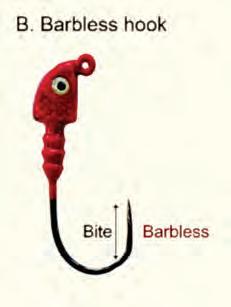






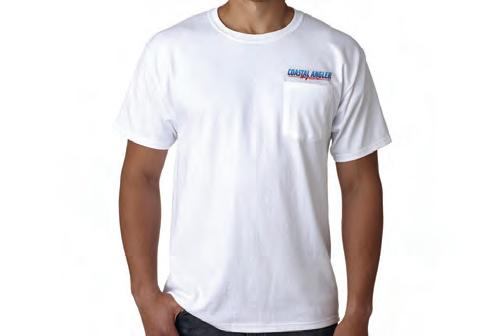
Amonster goldfish aptly named “Carrot” has been making the rounds on social media recently after the fish was caught from a trophy carp lake in Champagne, France. UK angler Andy Hackett caught the nearly 70-pound bright orange fish from Bluewater Lakes, a heavily managed, privately owned pay-to-play fishery that boasts of carp weighing heavier than 90 pounds.


Carrot seems to be somewhat of pet, but not the type you’d keep in a fish bowl. She is a crossbreed between leather carp and koi, and was stocked in the lake 15 years ago to give anglers an interesting fish to pursue.
“I always knew The Carrot was in there but never thought I would catch it,” said Hackett. It took him 25 minutes to reel in pot-bellied carp, which officially weighed an astounding 67.4 pounds.
Carp caught at Bluewater Lakes are handled very carefully with a strict catchand-release policy.
For more record fish, see coastalanglermag.com.
Sheepshead have become a wintertime staple when water temps drop and the regular cast of inshore characters become more difficult to target. If you’re a cold-weather inshore angler, you’re probably already familiar with sheepshead, so here are a few tips you might not have heard yet.

Finding Fish: Convict fish travel and feed in packs. Once you locate them, the action can be fast, but you have to find them first. Obviously, they like structure like bridges, docks and jetties, where they can happily gnaw on barnacles.
When considering structure, older, rambling docks with lots of pilings provide more surface area for established colonies of crustaceans. These can be honeyholes, but keep moving if you’re not catching fish. You might run a dozen different structures in a day and catch 90 percent of your fish on one. In
By CAM Staff
the clear water of winter, sheepshead can often be sight fished, and they don’t really spook, so look for them before casting. If the water is too dingy to see them, you can sometimes hear them crunching shells if you listen quietly.
Chum ’Em Up: This might sound silly, but sheepshead get excited about free food just like any other species of fish. Keep a shovel on the boat and scrape barnacles off the structure you’re fishing. This rings the dinner bell, and it’ll also help you spot them as they dart around to pick off the falling morsels.
Play the Tides: Pretty much every fish feeds best on a moving tide, but a ripping flow can be detrimental when fishing for such a structure oriented fish. Fast moving water tends to pin sheepshead right up against structure.
This, and the tide itself, can make presenting baits more difficult. Find a moderate tide, and sheepies will spread out and move around a little more, which makes them easier to catch. Position yourself up-current and allow your baits to drift down into the fish.
The Business End: Although they are not skittish, sheepshead can be selective. Whether you’re fishing fiddler crabs, shrimp tails, sand fleas, oysters or clams, use a small, short-shank hook and hide it inside your bait.
Also, fish braided line. Braid has less stretch, so those little bumps when a sheepshead taps your bait translate better to the rod tip. Braid also has better abrasion resistance for when they pull you around a piling, but the increased sensitivity is key. With their black and white bars, convicts are notorious bait thieves. You need to know it the instant they suck in your bait.

season and is only going to get better. Trolling
smaller chicken dolphins. If lures are your thing I prefer Yozuri Crystal Minnows and honestly color doesn’t matter. Pitch around the weed lines or patches and look deeper down for the bigger Mahi. As for Tuna with all the chumming going on, I like to send down a vertical jig on 60#-80# test at least 100’ below the boat. Working your jig through the water column is a good way to fire up any kind of fish that may be lurking around in the shadows. If you have a large diamond jig I’d put some heavy wire in front of it for a chance at a wahoo. Triple Tail are amazing fish on light tackle and I recommend 15#-20# fluorocarbon and #2 Owner hook. Live
If bottom fishing is your go to joy Vermillion snappers, Groupers, and Rock salmon is my target. For Vermillion snappers I like using a 2-3 hook chicken rig mixed with cut squid and Boston mackerel. Let your weight sit right on the bottom and wait for those 2-3 light bites. Rock salmon and Groupers like to hide out in the rocks and caves, so a slip lead is what I like to use. Heavier leader line for Groupers and larger baits close to the bottom. Feel the bite and start cranking. The first 20’-30’ are the most

When it comes to offshore fishing don’t give up. There’s a lot of trial and error. Figure out what works best for you and as always keep your lines out and keep them tight.


The Angler Video Magazine connects fishing and boating enthusiasts with industry news and shared community interests in a unique, industry-first format — a video magazine. Sent to over 3.2 MILLION licensed anglers, The Angler Video Magazine is provided to its readers for FREE. No subscriptions or payments are required for viewing.
Support The Angler Video Magazine’s mission to provide FREE content to the recreational fishing and boating communities and industries throughout the world by sharing, subscribing and advertising.
